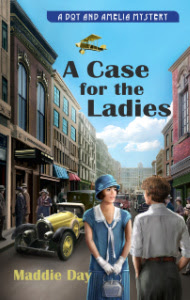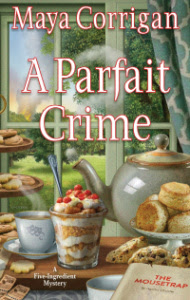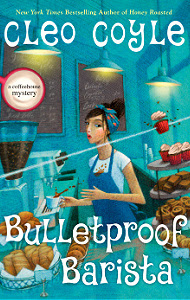by Sheila Connolly
I
love old cookbooks, not merely for the recipes but also because they’re such
entertaining reading. I learn a lot about how things used to be done, and I’m
usually saddened by the diversity that we’ve lost. Of course, I’m willing to
admit that cooking is a lot easier today than it once was.
 |
| One might question the use of "cooked into a dead certainty" for one's jacket copy! |
Recently
I acquired yet another new old cookbook, entitles Mrs. Rorer’s Cook Book, printed in Philadelphia in 1914 (second
edition). Since the fifth book in my Philadelphia-based Museum Mystery series, Razing the Dead, is coming out on June 3rd, it seems appropriate to tap Mrs. Rorer for some
ideas.
Well,
I ran into a few stumbling blocks as I began reading. Take the recipe for
Calf’s Head Soup, for instance. You begin with a calf’s head, then “Wash the head
well through three waters; scald it, wash it again in cold water, and soak it
fifteen minutes. Be sure the throat and nasal passages are perfectly clean.” After
all this you simmer it (Mrs. Rorer
loves to italicize “simmer”) for a mere five hours, skimming it until the scum
stops rising. I think I’ll skip this recipe.
And
you probably don’t need to know how to clean a suckling pig.
Or
there’s Green Turtle Soup (a Philadelphia classic), which begins, “The day
before you intend to dress the turtle cut off its head; and to do this properly
you should hang up the victim with its head downwards, use a very sharp knife
and make the incision as close to the head as possible. You must not be
surprised at seeing, many hours after the decollation, the creature exhibit
extraordinary signs of muscular motion, by the flapping of his fins.” I might
use this for a murder, but for soup? I don’t think so. Mrs. Rorer was a brave
woman.
But
in spite of the gore, the book is filled with interesting tid-bits. There are
pages of recipes for oysters (on the half shell, stewed, fricassee, creamed,
panned, broiled, baked, fried, scalloped, with macaroni, deviled, croquettes,
fritters, kromeskies (no, I don’t know what these are), and pickled). I’m going to guess that they’re much less
plentiful today than they were a century ago.
Mrs.
Rorer tells us that asparagus should be soaked for twenty minutes, then boiled
for thirty minutes. You can stew or fry your cucumbers, even in batter (really?
Seriously?), or make Wilted Dandelions. So many wonderful options!
Let
us now turn to the section on Pastry and Pies (the book just happens to fall
open there!), which begins with Apple Pie, soon followed by Cherry, Cocoanut
Custard, Cranberry (to the version which includes molasses, the author appended
GOOD—I hope to try this one), Cream, Gooseberry, Huckleberry, Lemon Custard,
Mincemeat, Molasses, Peach, Sweet Potato Custard, White Potato Custard,
Pumpkin, and Rhubarb—and that’s before you reach the Hot Puddings. I rather
like the recipe for “The Pudding of Long Ago,” which involves apples and
breadcrumbs and must boil for a mere three hours.
Let
me note that Mrs. Rorer’s list of items required for a well-furnished kitchen
runs to three pages of small print. I regret to say I am sadly lacking a Mudge
cannery, a coffee biggin, a Turk’s head, a griddle spade, a pastry jagger, a
Keystone beater, an old Doctor’s ice pick, a keeler, and a plank for planking
shad, not to mention the cave for freezing.
So
many intriguing recipes! Here I present you with one, chosen purely for its
name.
PLUNKETS
4
eggs
Weight
of eggs in powdered sugar
Weight
of eggs in butter
Weight
of eggs in rice flour
1
tsp vanilla, or the juice and rind of one lemon
Sounds
like the original recipe for pound cake, right? One pound of everything. I am
lucky to have a small kitchen scale, and I’m happy to translate for the modern
cook:
4
large eggs weighed about 8 ounces, so for the rest:
2
cups powdered sugar
1/2
pound salted butter (2 sticks)
1
cup rice flour
1
tsp vanilla extract
Preheat
the oven to 350 degrees. Generously
grease small scalloped tins (Mrs. Rorer calls them pattypans). The greasing
part is important: I tried a variety of pans, from aluminum madeleine molds to
French brioche tins to my vintage (yes) pattypans, and the well-seasoned
pattypans worked best and stuck the least, although I’d greased them all
equally with Crisco.
Beat
the butter to a cream, then add the sugar gradually, beating continuously.
Separate
the whites and the yolks of the eggs.
Add the yolks to the batter and beat. Whip the whites to a stiff froth,
then add to the batter (do not overmix, since this is the only leavening), then
gradually add the rice flour.
(Note:
this was the original sequence. I was worried that the egg whites would
deflate if I added them before the rice flour, so I added those two ingredients
in reverse order.)
Finally,
add the vanilla or the lemon. Beat the
whole until “fine and light” (so says Mrs. Rorer). Pour into the greased tins
(not too much batter—these are not cupcakes!).
 |
| The pattypans are on the right. |
Bake
about 20 minutes (or more). The timing will depend on the thickness, but in general the
top and edges should be lightly browned, and the edges should pull away from
the pans. [Let cool briefly, then turn out onto a rack to continue cooling.
When cool, put them in a sealed box.]
The
plunkets are crisp and sweet (and gluten-free?), and the rice flour added a
little crunch (or maybe I have crunchy rice flour). Thank you, Mrs. Rorer! Maybe I'll try her recipe for Jolly Boys next--they're supposed to be accompanied by Nun's Butter.
Coming June 3rd! I've rewritten the Revolutionary War! (Well, a very small part of it.)








































Those look yummy, Sheila. In Japan they make desserts with rice flour and I like that texture.
ReplyDeleteSay, I need some kind of chicken stew recipe from the late 1800s. Can you find a name for one for me in your books?
Those turned out so cute Sheila--perfect to serve at tea, right? Edith, I'm sure Sheila could find you a chicken stew, but it might have heads and beaks too LOL
ReplyDeleteBe careful what you wish for! Mrs. Rorer is more than happy to oblige (after she's told you how to select your chicken and clean it). There's Smothered Chicken, Brown Fricassee of Chicken, White Fricassee of Chicken, Chicken au Supreme, Chicken a la Marengo, Chicken a la Tartare (no, it's not raw), Chicken Chops, Chicken Croquettes (which include a pair of sweetbreads), Chicken Terrapin (no turtle involved!), Boudins a la Reine, Chicken a l'Italienne, Chicken Cecils, Chicken a la Bechamel, Chaud Froid of Chicken, Blanquette of Chicken, Chicken Souffle, Boned Chicken (with three pages of instructions), and Pressed Chicken. Let me know if any of these tickles your fancy and I can provide details.
ReplyDeleteOh, my!
ReplyDeleteSheila, yes, entirely gluten-free! What fun! I used to make something like these back in high school using a Danish recipe. Yum! Can't wait. Now I have to find those darling tins again. I had those but they were, um, lead-based, pretty sure. LOL
ReplyDeleteDaryl / Avery
PS I have a character in my new Cookbook Nook series, minor character, but I was hoping a plot would unfold for her in the future. It's Gran and she collects tons of cookbooks, all kinds. These two might go into her pile!
DeleteDaryl / Avery
These are so pretty! And those old recipes, oh, my. I would have starved or become a vegetarian. I couldn't handle all that killing in real life (only in books lol)
ReplyDeleteI'm with you! No calves heads and such for me!
ReplyDeleteThese are very nice looking. Why do some appear to be pink?
Oh ,these are very pretty. I like old cookbooks, too--they're so interesting! Sheila, you're very adventurous trying all these recipes for us, I applaud you! (Look forward to the new book also)
ReplyDeleteI had to go look up kromeskies, and the Free Dictionary online tells me: a croquette consisting of a piece of bacon wrapped round minced meat or fish[C19: from Russian kromochka, diminutive of kroma slice of bread] They are battered then fried, so sounds pretty good but not at all "light. ;) Here's a recipe for them if anyone wants to check it out: http://cooks.ndtv.com/recipe/show/kromeskies-106781
about six years ago at our church here in Indiana there were so many old cookbooks you would have been in hog heaven. (Yes, I snatched a couple of old ones) The rest went to Goodwill more than likely as most people sort of just threw up their arms at them.
ReplyDelete